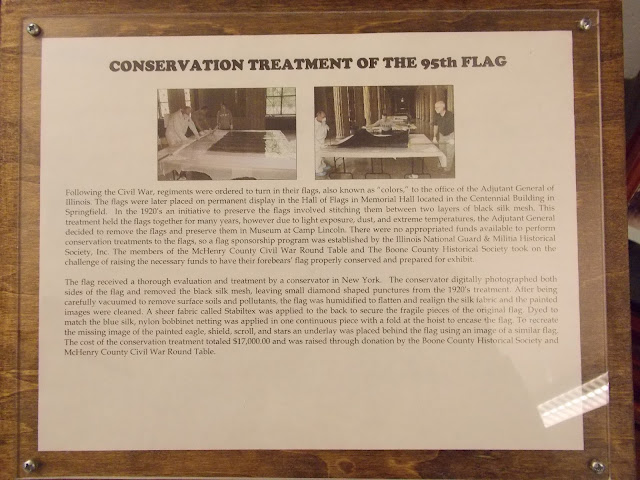Not only did these banners instill a sense of pride and, therefore, boost morale, but they also served a practical purpose in that they were rallying points. With smoke and noise creating chaos on the battlefield, flags became important visual beacons that guided soldiers through an engagement.
As the war progressed, the men of a unit would emblazon their banners with the names of the battles in which they had participated. Therefore, flags became somewhat of a book that told the story of the trials the men and women had endured. And upon the conclusion of the conflict, some of the soldiers decided to tear out a "page" and take it home as a memento by cutting away strips of cloth from their beloved flag that was just as tattered and worn as they were. State governments collected what was left and made attempts to store and eventually preserve the banners.
Recently, I had a chance to view the regimental and national flags of the 95th Illinois Infantry. The regimental flag has been restored and is on display at the Boone County Historical Museum in Belvidere, Illinois. The ladies at the museum are very nice. Go see them if you get a chance.
(Photos by Mark Hidlebaugh)
 |
| plaques under the flag |
Click [HERE] for before and after pictures of the flag as well as photos of its journey to and from New York where it was conserved.
While the regimental flag of the 95th is in Belvidere, the national flag borne by the unit is 200 miles away in the Old State Capitol in Springfield, Illinois.
There were at least three women who served under these flags. Albeit, two of them were discovered fairly quickly and did not witness the banners held high amidst the smoke on a battlefield. One of them, however, fought for them throughout the war's entirety.
 |
| display at the Boone County History Museum near the regimental flag |
Click [HERE] to read an article I wrote about the other women of the 95th Illinois Infantry.
Until next formation...rest.




No comments:
Post a Comment